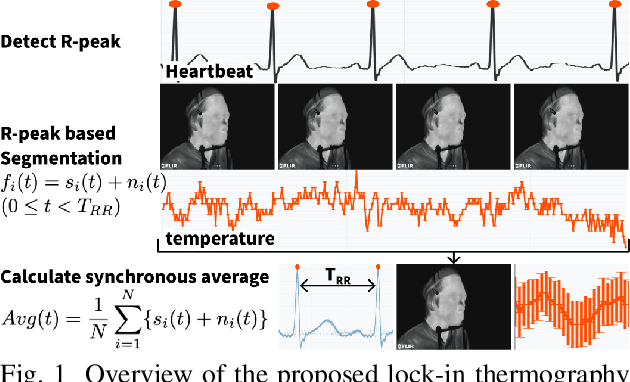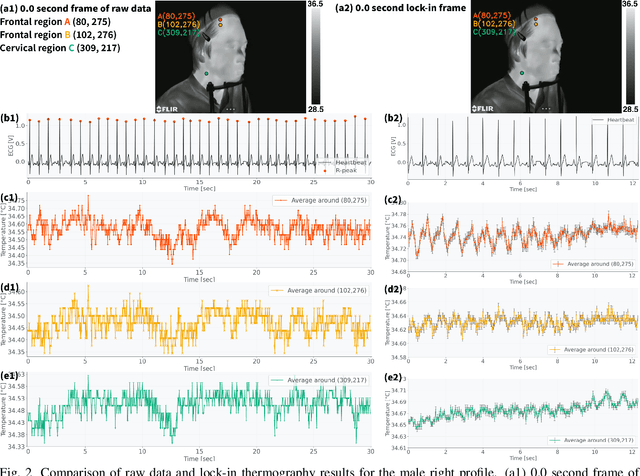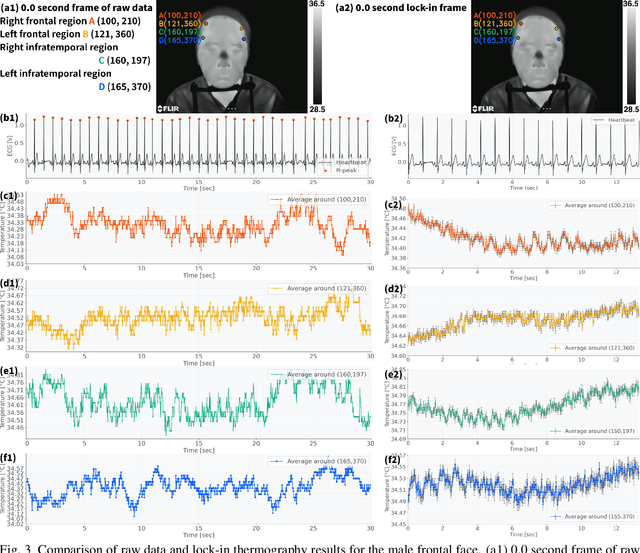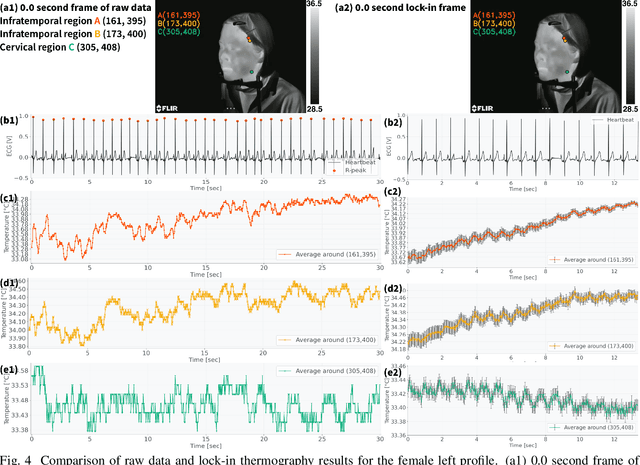Nanami Kotani
Synchro-Thermography: Monitoring ~10 mK Facial Temperature Changes with Heartbeat Referencing for Physiological Sensing
Jun 05, 2025Abstract:Infrared thermography has gained interest as a tool for non-contact measurement of blood circulation and skin blood flow due to cardiac activity. Partiularly, blood vessels on the surface, such as on the back of the hand, are suited for visualization. However, standardized methodologies have not yet been established for areas such as the face and neck, where many blood vessels are lie deeper beneath the surface, and external stimulation for measurement could be harmful. Here we propose Synchro-Thermography for stable monitoring of facial temperature changes associated with heart rate variability. We conducted experiments with eight subjects and measured minute temperature changes with an amplitude of about \SI{10}{mK} on the forehead and chin. The proposed method improves the temperature resolution by a factor of 2 or more, and can stably measure skin temperature changes caused by blood flow. This skin temperature change could be applied to physiological sensing such as blood flow changes due to injury or disease, or as an indicator of stress.
Detecting $\sim$10 mK Face Temperature Change Based on Lock-in Thermography Referencing Heartbeat
Jul 30, 2024



Abstract:Infrared thermography, which has widely spread particularly during the COVID-19 period, has been effectively used for research on health monitoring and emotion estimation. Nevertheless, detecting minute temperature changes with thermography is challenging as it is disturbed by not only noise but also outside temperature surrounding the object. In this study, we demonstrate detecting face temperature variation by implementing lock-in thermography using heartbeat signals as a reference. It allows us to detect minute temperature changes, as low as $\sim$10 mK, on the forehead with a commercially available thermal camera. The proposed approach enables stable measurement of body temperature variation, showing potential for non-contact emotion estimation.
Point Anywhere: Directed Object Estimation from Omnidirectional Images
Aug 02, 2023Abstract:One of the intuitive instruction methods in robot navigation is a pointing gesture. In this study, we propose a method using an omnidirectional camera to eliminate the user/object position constraint and the left/right constraint of the pointing arm. Although the accuracy of skeleton and object detection is low due to the high distortion of equirectangular images, the proposed method enables highly accurate estimation by repeatedly extracting regions of interest from the equirectangular image and projecting them onto perspective images. Furthermore, we found that training the likelihood of the target object in machine learning further improves the estimation accuracy.
 Add to Chrome
Add to Chrome Add to Firefox
Add to Firefox Add to Edge
Add to Edge